The 1927 Indian Head Buffalo Nickel with no mint mark (Philadelphia Mint) ranges from $1-$25 for circulated coins and $55-$650+ for uncirculated specimens. Value depends primarily on condition and grade, with Mint State examples commanding premium prices. The 1927-D (Denver) and 1927-S (San Francisco) variants have different valuations based on mintage and rarity. Common errors include double die, off-center strikes, and repunched mint marks that can significantly increase worth. To determine accurate value: identify the mint mark location, assess coin condition using grading guides, and consult professional grading services like NGC or PCGS for precise authentication and valuation of higher-grade specimens.
Finding a 1927 Buffalo Nickel in your pocket change or inherited collection can spark immediate curiosity about its worth. While this isn’t the rarest date in the series, specific mint marks, pristine conditions, and error varieties can transform an ordinary five-cent piece into a collector’s prize worth hundreds of dollars. Understanding the nuances between Philadelphia, Denver, and San Francisco strikes—plus knowing what errors to hunt for—ensures you don’t accidentally spend a valuable coin at face value.
Understanding the 1927 Buffalo Nickel Production
The United States Mint struck Buffalo Nickels at three facilities in 1927, each leaving distinct characteristics that directly impact current market values. Philadelphia produced 37,981,000 pieces without any mint mark, making it the most common variety. Denver struck 5,730,000 coins marked with a “D” below the denomination on the reverse, while San Francisco contributed just 3,430,000 pieces bearing an “S” mint mark in the same location.
These production numbers tell only part of the value story. Survival rates matter significantly—millions of coins entered circulation and wore down through decades of use. The San Francisco issue, despite its lower mintage, doesn’t command dramatic premiums in lower grades because sufficient examples survived. However, in Mint State preservation, the mintage figures create notable scarcity that collectors pay premium prices to obtain.
The composition remains consistent across all three mints: 75% copper and 25% nickel, weighing 5 grams with a diameter of 21.2 millimeters. James Earle Fraser’s iconic design features a composite Native American portrait on the obverse and an American bison on the reverse, both prone to wear in high-relief areas that affect grading.
1927 Philadelphia No Mint Mark Values
Philadelphia Buffalo Nickels from 1927 represent the workhorse of this year’s production. Circulated examples in Good-4 condition, where the date remains visible but major design details have worn smooth, typically trade for $1.00 to $1.50. Fine-12 specimens showing moderate wear but clear lettering fetch $2.50 to $4.00, while Extremely Fine-40 coins with minor wear on high points command $12 to $18.
The value landscape changes dramatically in uncirculated territory. Mint State-60 examples, showing no wear but possessing numerous bag marks and lackluster surfaces, sell for $55 to $75. MS-63 coins with better eye appeal and fewer distracting marks range from $85 to $125. Gem MS-65 specimens featuring sharp strikes and original luster reach $275 to $425, according to recent Heritage Auctions sales data.
Premium uncirculated specimens achieve remarkable prices. An MS-66 graded by PCGS sold for $850 in a 2023 Stack’s Bowers auction, while the finest known MS-67 example realized $7,200 through Heritage Auctions in 2022. These exceptional pieces combine full horn details, complete separation on the bison’s fur, and unblemished surfaces with vibrant original mint luster.
1927 No Mint Mark Value Table:
| Grade | Value Range |
|---|---|
| Good-4 | $1.00 – $1.50 |
| Fine-12 | $2.50 – $4.00 |
| Very Fine-20 | $6.00 – $9.00 |
| Extremely Fine-40 | $12 – $18 |
| About Uncirculated-50 | $28 – $38 |
| MS-60 | $55 – $75 |
| MS-63 | $85 – $125 |
| MS-65 | $275 – $425 |
| MS-66 | $650 – $1,100 |
| MS-67 | $5,000 – $8,500 |
1927-D Denver Mint Values
Denver’s contribution of 5,730,000 pieces makes the 1927-D moderately scarcer than its Philadelphia counterpart, particularly in higher grades. Circulated examples in Good-4 condition start at $1.75 to $2.25, while Fine-12 specimens range from $4.00 to $6.50. Extremely Fine-40 coins showing crisp details on the Indian’s feathers and bison’s head command $20 to $32.
Uncirculated 1927-D nickels require deeper pockets. MS-60 examples begin at $85 to $110, reflecting the relative difficulty of locating Denver strikes that escaped circulation. MS-63 coins with acceptable surfaces and luster sell for $140 to $210. Gem MS-65 specimens, properly struck with full horn definition and minimal marks, achieve $425 to $675 at major auction houses.
The Denver Mint struggled with die maintenance throughout the Buffalo Nickel series, frequently producing coins with weak strikes on the bison’s head and the Native American’s hair details. Collectors pay significant premiums for sharply struck examples. A well-struck MS-66 sold for $1,450 through Great Collections in early 2023, while an exceptional MS-67 specimen realized $11,500 at a Heritage Auctions sale in 2022, demonstrating how strike quality amplifies rarity.
1927-S San Francisco Mint Values
The 1927-S represents the lowest mintage of this year’s production at 3,430,000 pieces, yet values in circulated grades remain modest. Good-4 examples trade for $1.75 to $2.50, while Fine-12 coins fetch $5.00 to $7.50. Extremely Fine-40 specimens with clear design elements command $24 to $38, only marginally above Denver issues despite lower production figures.
Mint State examples tell a different story. MS-60 coins start at $95 to $130, while MS-63 specimens range from $175 to $265. Gem MS-65 pieces, combining full design details with attractive surfaces, sell for $525 to $825. The San Francisco Mint produced many 1927 nickels with superior strikes compared to Denver, making well-defined examples more available but still valuable.
Top-tier specimens command impressive premiums. An MS-66 graded by NGC brought $1,850 at a 2023 Stack’s Bowers auction, while the finest certified MS-67 example achieved $15,000 through Heritage Auctions in 2021. These exceptional coins feature complete horn separation, fully detailed bison fur, and pristine surfaces that survived nearly a century without significant contact marks or environmental damage.
Error Varieties and Their Premium Values
Several collectible errors occurred during 1927 Buffalo Nickel production, though none achieved the legendary status of earlier dates like the 1937-D Three-Legged Buffalo. The most sought-after variety is the 1927-D Doubled Die Obverse, showing clear doubling on “LIBERTY” and the date. Circulated examples in Fine-12 condition sell for $45 to $75, while MS-63 specimens reach $350 to $550. An MS-65 example sold for $1,425 at Great Collections in 2022.
Off-center strikes occur across all three mints when planchets feed improperly into the coining press. A 5% off-center error with full date visible commands $75 to $150 in circulated grades, while a 10% off-center specimen reaches $150 to $300. A dramatic 25% off-center 1927 Philadelphia strike in AU-55 condition realized $825 through Heritage Auctions in 2023.
Strike-through errors, where foreign objects create impressions during minting, appear occasionally. A 1927-D struck through a wire fragment, creating a raised line across the bison, sold for $185 in VF-20 condition. Clipped planchets missing 10-15% of metal due to improper blank cutting fetch $65 to $125 in mid-grade preservation.
Repunched mint marks exist primarily on Denver and San Francisco issues, where the “D” or “S” was punched multiple times in slightly different positions. Strong repunched mint marks on 1927-D coins add $20 to $50 to base values in circulated grades, while 1927-S examples with visible repunching command similar premiums. These varieties require magnification to authenticate properly.
Authentication and Grading Essentials
Accurately determining your 1927 Buffalo Nickel’s grade requires examining specific design elements that wear predictably. On the obverse, check the Indian’s cheekbone, hair details above the forehead, and the braid definition. The reverse shows wear first on the bison’s hip, front shoulder, and horn—these areas must show complete separation and detail for Mint State designation.
Circulated grades follow established standards. Good-4 coins show a readable date and visible outline but worn flat major features. Fine-12 specimens display three-quarters of horn detail with clear “LIBERTY” letters. Extremely Fine-40 pieces retain sharp design elements with only slight wear on highest points. About Uncirculated grades (AU-50 through AU-58) show minimal friction on high points but retain most original mint luster.
Mint State grading focuses on contact marks, strike quality, and luster. MS-60 through MS-62 coins have numerous distracting marks, particularly on the Indian’s cheek and bison’s shoulder. MS-63 represents choice quality with fewer marks and good eye appeal. MS-64 shows minimal marks primarily in protected areas. MS-65 and higher exhibit exceptional surfaces, full strikes, and vibrant luster that survived decades without significant degradation.
Professional grading through PCGS or NGC costs $20 to $40 for standard service but proves worthwhile for coins potentially grading MS-64 or higher. A raw coin you believe grades MS-65 might achieve only MS-63 in professional assessment, significantly affecting value. Conversely, professional certification protects both buyer and seller, commanding higher prices in the marketplace. Third-party grading also identifies cleaned, repaired, or altered coins that carry substantial discounts.
Building a Complete 1927 Set Strategy
Assembling all three 1927 mint marks in matched grades creates an attractive collecting goal with manageable costs in circulated conditions. A three-coin set in Fine-12 grade requires approximately $12 to $18 total investment, providing examples of each mint’s work at affordable prices. Very Fine-20 matched sets cost $20 to $30, showing significantly better design details.
Collectors targeting Mint State sets face steeper challenges. An MS-63 three-coin set commands $400 to $600, requiring patience to locate properly matched coins with similar toning and eye appeal. MS-65 sets push into the $1,200 to $1,900 range, with the San Francisco issue typically presenting the greatest availability challenge in this grade level.
Advanced collectors pursuing finest-known specimens should focus on the 1927-S first, as it offers the strongest appreciation potential in MS-66 and MS-67 grades. Population reports show fewer than 25 examples certified MS-67 by both major grading services combined, creating genuine scarcity. The Philadelphia issue exists in greater high-grade numbers, making it the logical final purchase for budget-conscious collectors building premium sets.
Consider purchasing circulated examples raw from local dealers or coin shows, where negotiation often yields better prices than online auctions. Reserve professional grading expenses for uncirculated candidates where certification significantly impacts marketability and value. Join the American Numismatic Association or local coin clubs to access dealer networks and educational resources that improve your authentication skills and market knowledge.
Where to Sell Your 1927 Buffalo Nickel
Online auction platforms like eBay reach massive audiences but charge 12-15% final value fees plus payment processing costs. This route works best for common circulated examples in the $5 to $25 range where convenience outweighs fee concerns. Professional photographs showing both sides, mint mark close-ups, and any notable characteristics improve selling success significantly.
Local coin shops offer immediate payment but typically pay wholesale prices—expect 50-70% of retail value for common dates in circulated grades. However, reputable dealers pay competitive prices for Mint State specimens and error varieties they can quickly resell. Building relationships with local dealers provides reliable selling options when you need immediate liquidity rather than waiting for auction results.
Heritage Auctions, Stack’s Bowers, and Great Collections specialize in numismatic material, achieving strong prices for certified Mint State coins grading MS-64 and higher. Consignment typically charges 10-20% commission depending on lot value, with photography and catalog descriptions handled professionally. Auction houses reject common circulated material but excel at marketing premium specimens to serious collectors willing to pay market-appropriate prices.
Online forums like the Coin Community Forum and CoinTalk classified sections connect buyers and sellers directly, eliminating middleman fees. This approach requires patience and clear communication but often yields fair prices for both parties. Always use established payment methods with buyer protection when dealing with unknown parties, and ship valuable coins with full insurance and signature confirmation tracking.
You may be interested:
- 1859 Indian Head Penny Coin Value Complete Errors List And No Mint Mark Worth Guide For Collectors
- 1911 V Nickel Coin Value Guide Complete Errors List And No Mint Mark Worth Today
- 1902 Dime Coin Value Complete Errors List With O S And No Mint Mark Worth Guide
- 1788 Quarter Coin Value Complete Guide Errors List And D S P Mint Mark Worth Revealed
- 1776 To 1976 Bicentennial Half Dollar Coin Value Complete Errors List And What Your D S And No Mint Mark Coins Are Actually Worth
- 1990 Penny Coin Value Errors List How D S And No Mint Mark Pennies Are Worth Thousands Of Dollars

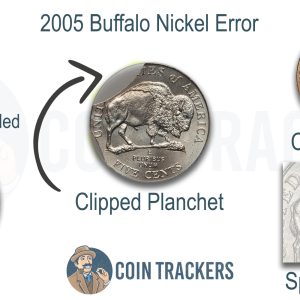
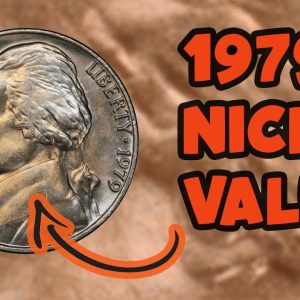
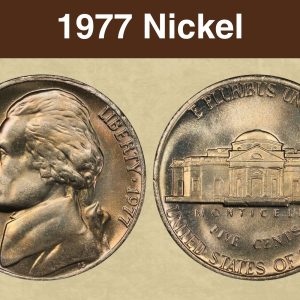
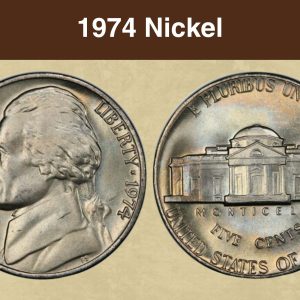
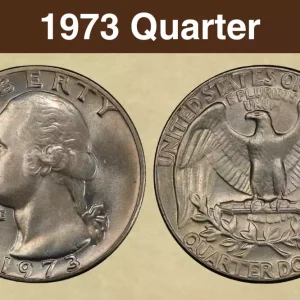
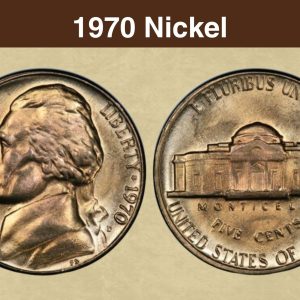
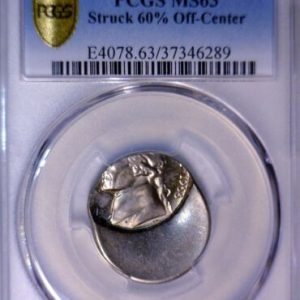
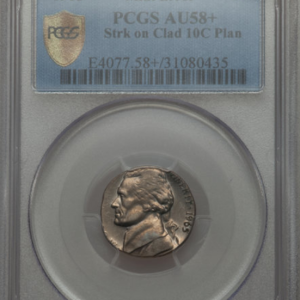
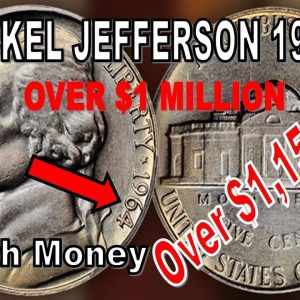
How much is a 1927 buffalo nickel worth with no mint mark?
A 1927 Buffalo nickel with no mint mark (from the Philadelphia Mint) has a value range of approximately $1 to $25 for circulated coins, and can be worth $55 to $650 or more for uncirculated coins, depending on their grade and condition. The specific value depends heavily on the coin’s condition, with lower grades having values closer to $1 and higher, uncirculated grades fetching significantly more, according to BOLD Precious Metals and NGC Coin Explorer.
What Indian head nickels are worth a lot of money?
Valuable Indian Head (or Buffalo) nickels are typically those with key dates, low mintages, or significant errors, such as the 1913-S Type 2, 1916 Doubled Die Obverse, 1918/7-D, 1926-S, or the famous 1937-D “3-Legged” variety. Condition, strike type, and mint mark also heavily influence value, with high-grade examples and those with errors being worth considerably more than common dates in circulated condition.
Where is the mint mark on a 1927 buffalo Head nickel?
On a 1927 Buffalo nickel, the mint mark is located on the coin’s reverse (back) side, centered below the words “FIVE CENTS”. There are three possibilities for the mint mark: it will be a “D” for the Denver Mint, an “S” for the San Francisco Mint, or no mint mark if it was struck at the Philadelphia Mint.
How do you tell if you have a rare buffalo nickel?
A Buffalo nickel’s rarity is determined by key dates, low mintages, and specific design flaws or errors. For example, the 1913-S Type 2, 1921S, 1924S, and 1926S are rare key dates. Errors like the 1937-D “three-legged” nickel or repunched mint marks, as well as a coin’s condition, significantly increase its value.